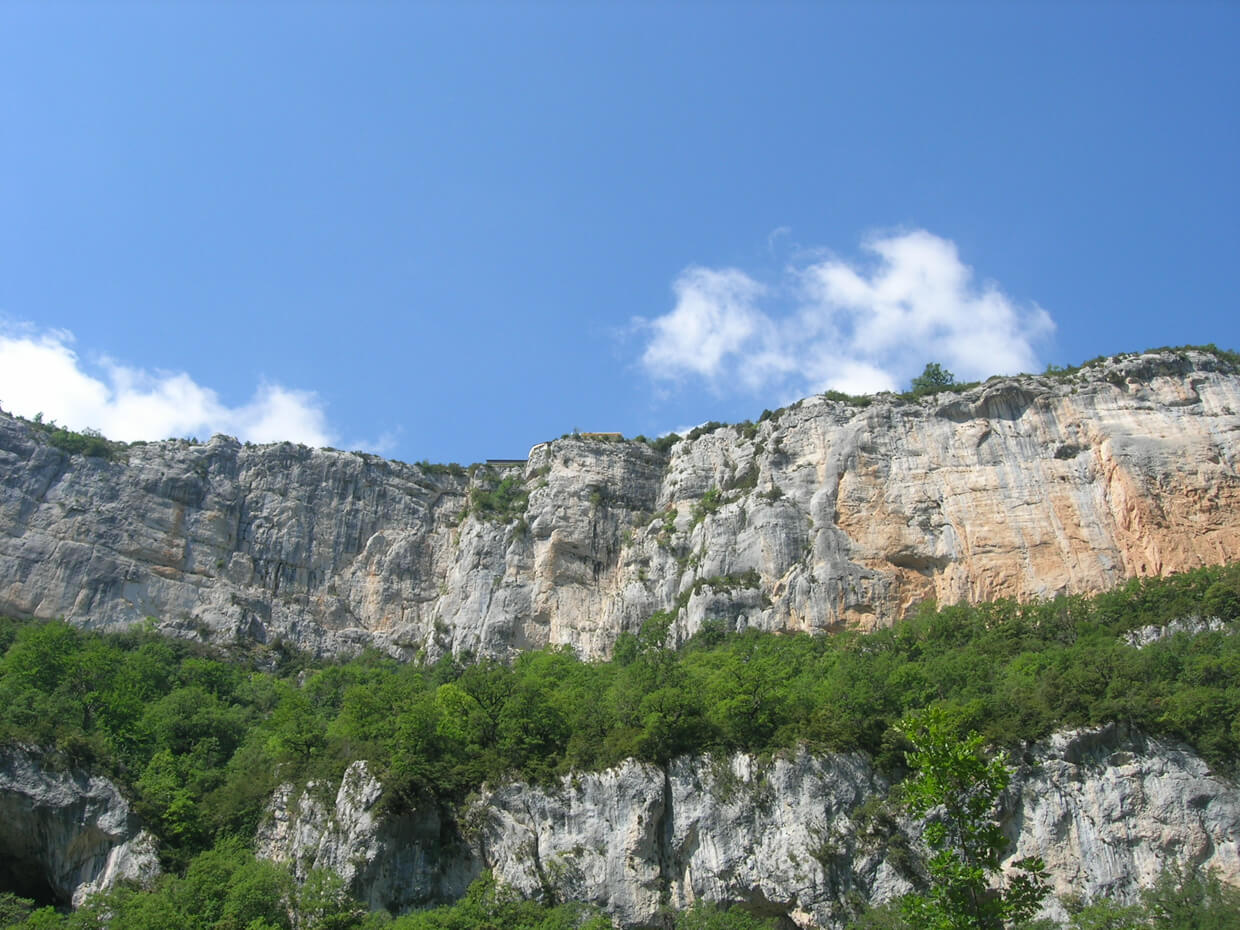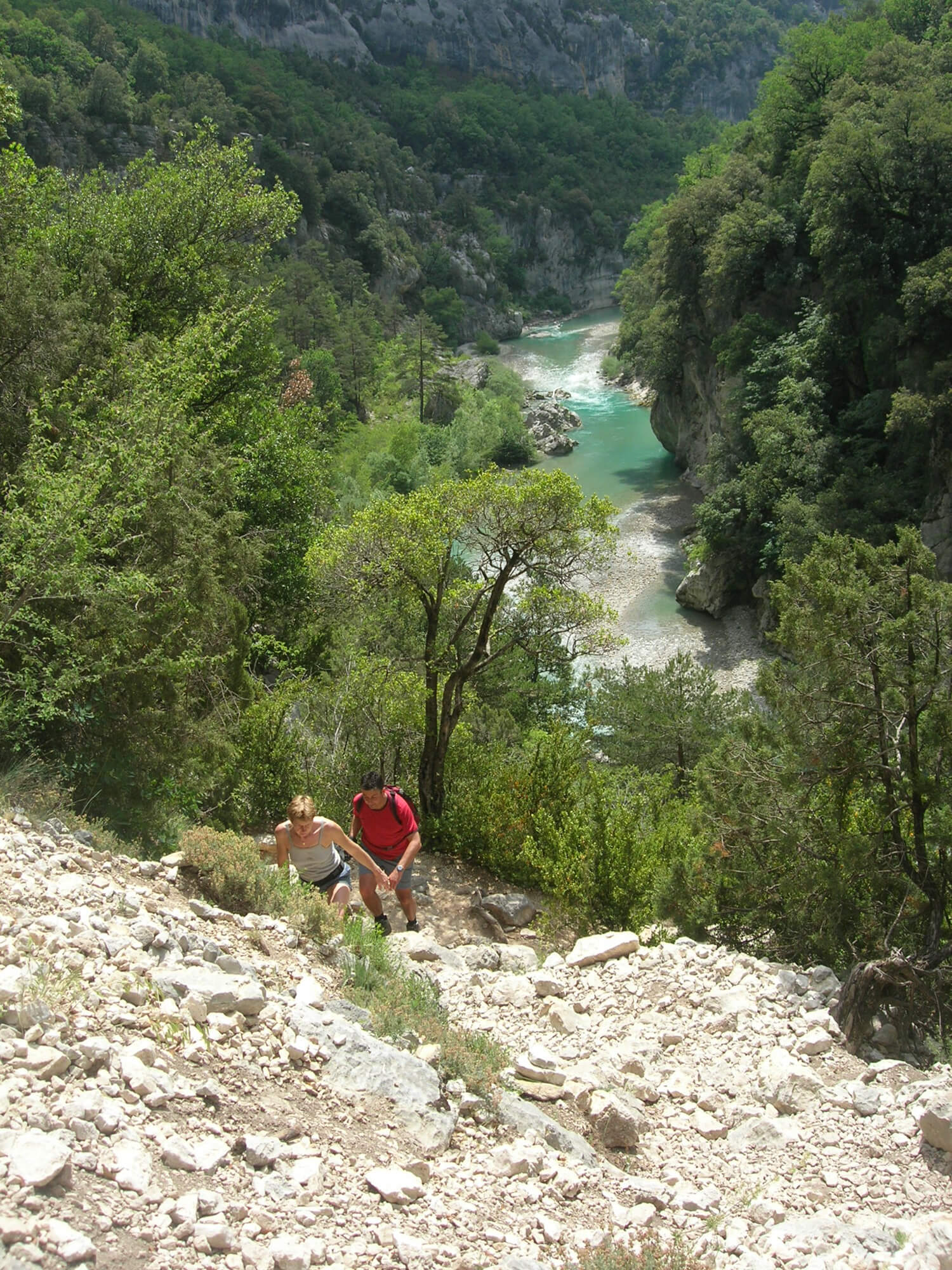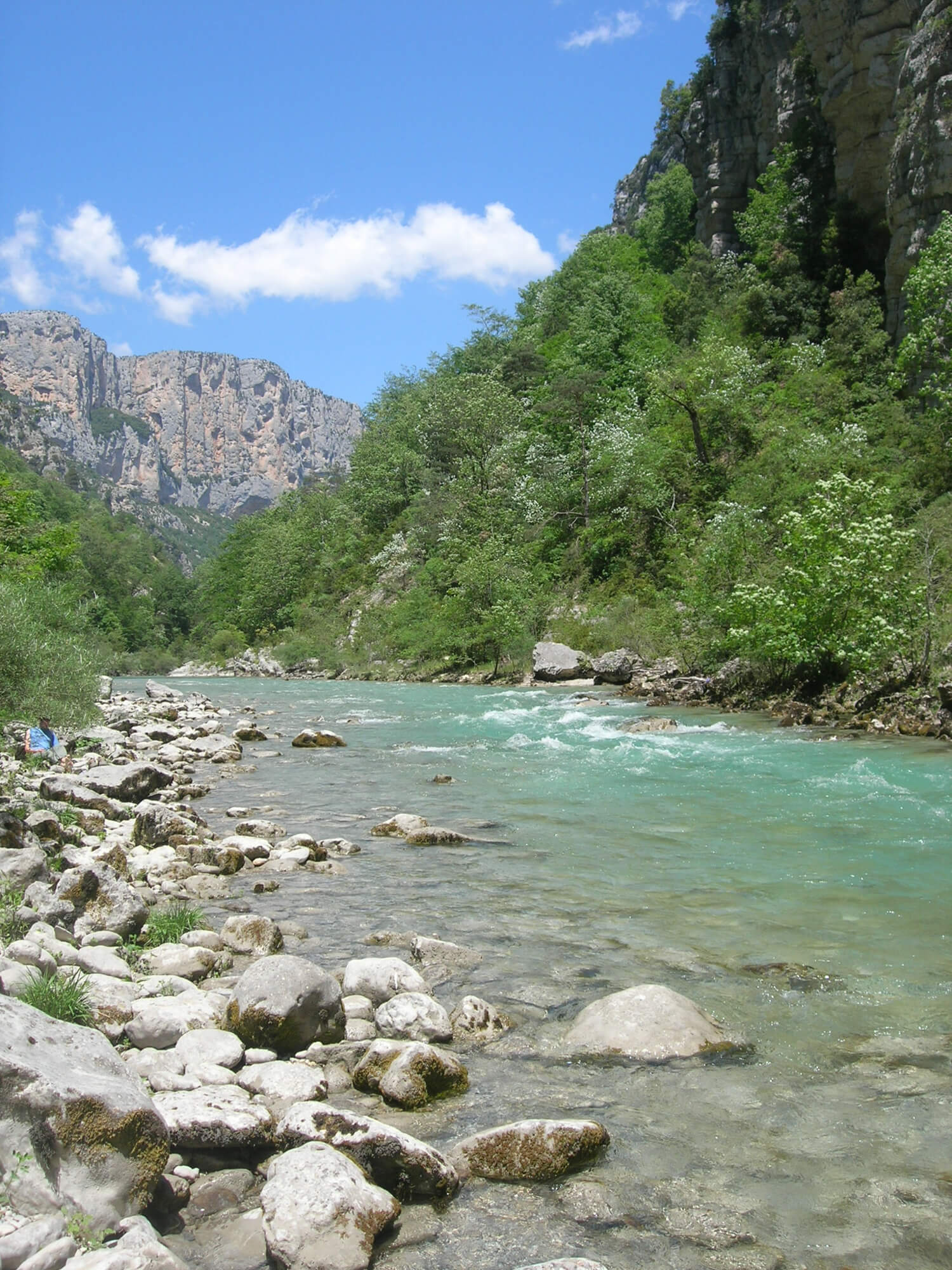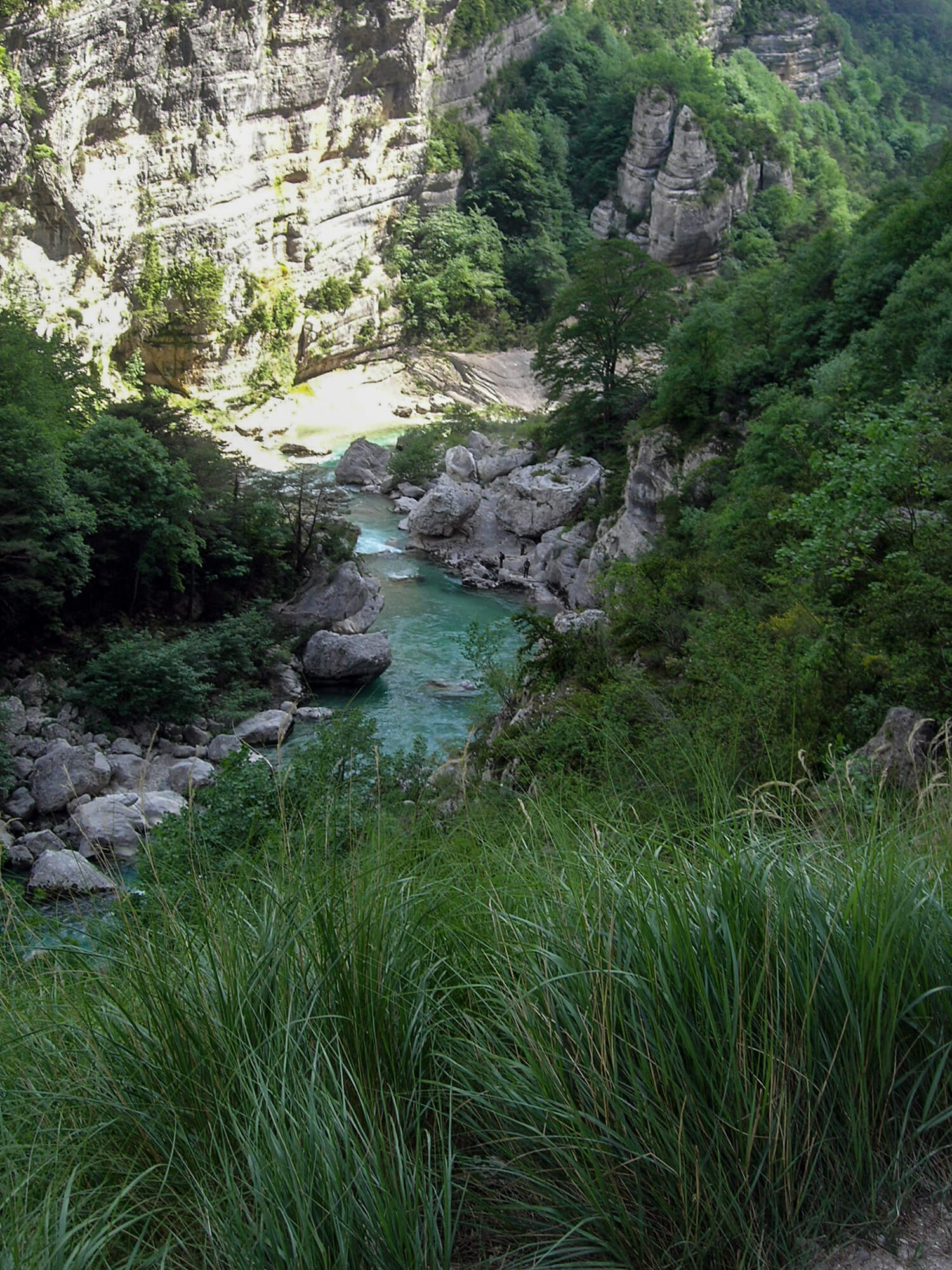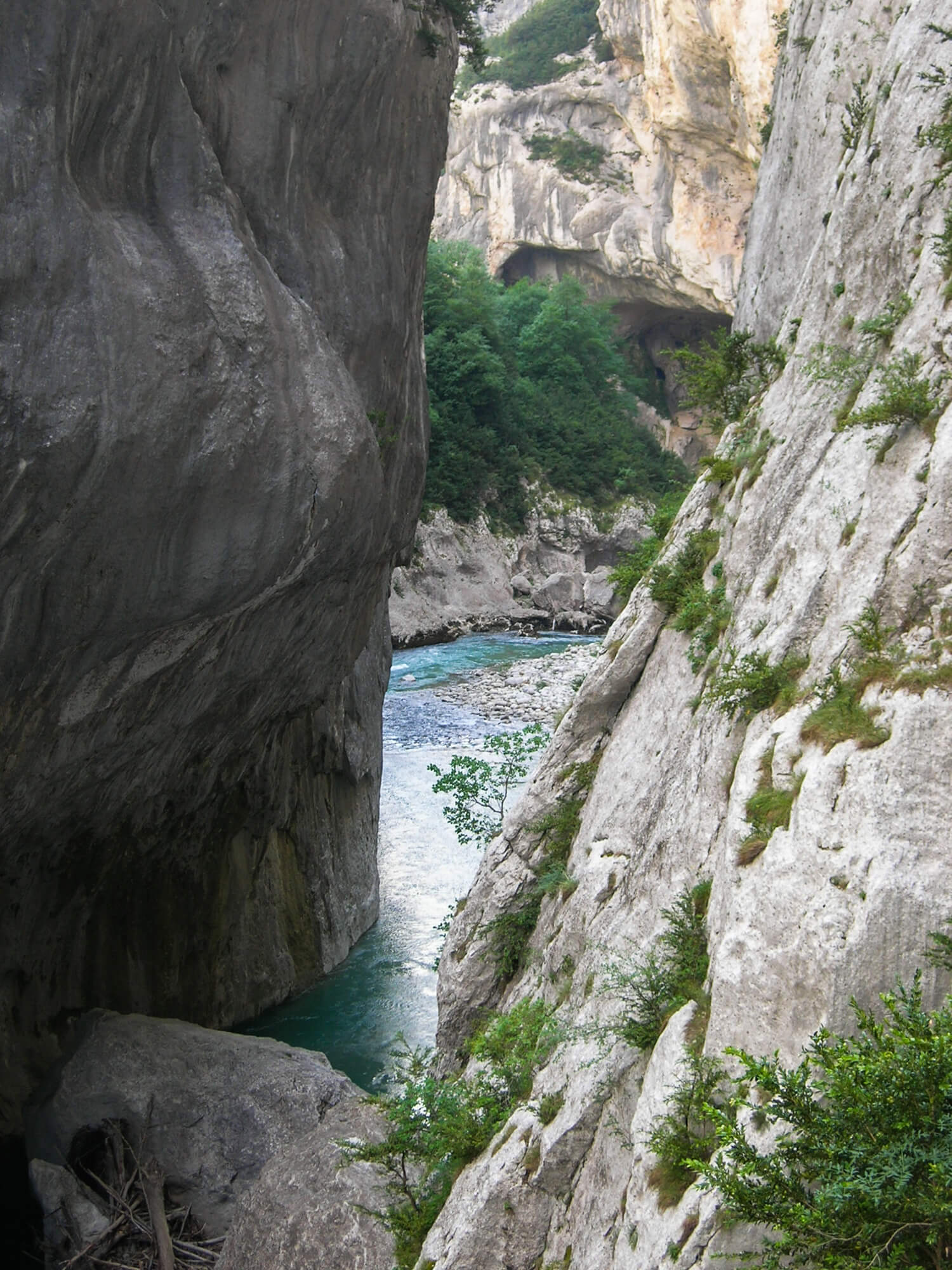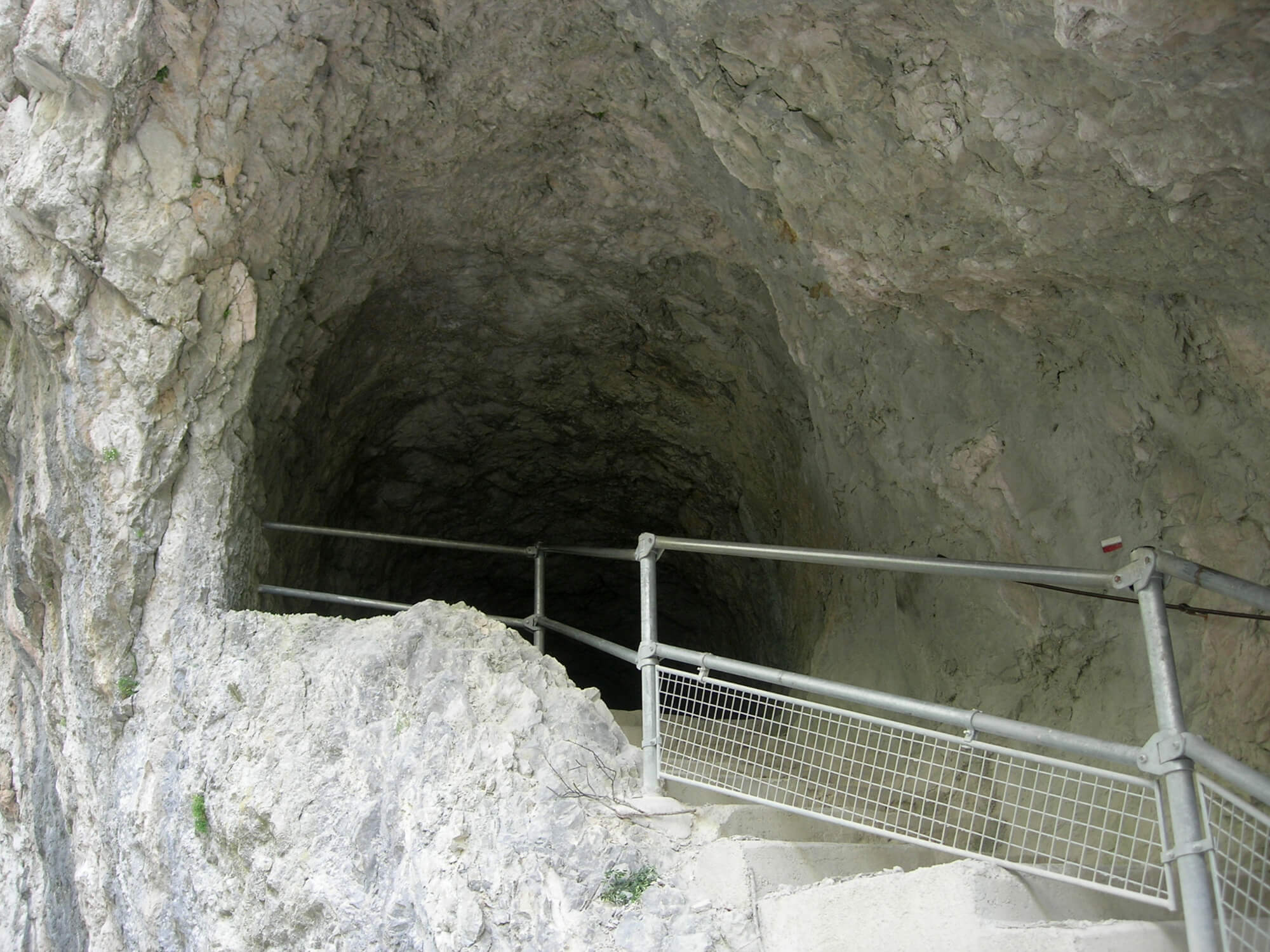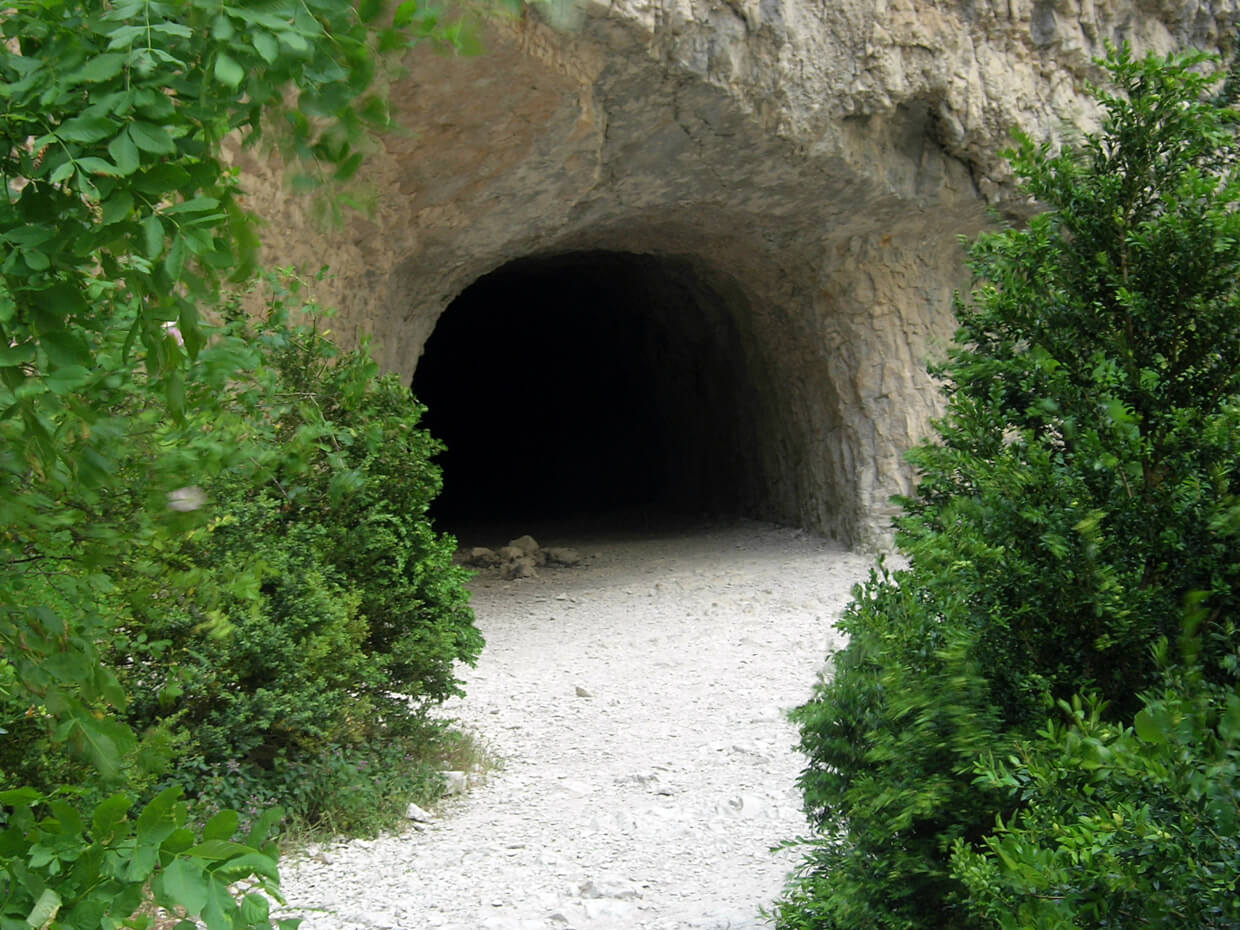
Le sentier Blanc-Martel is probably the most famous hiking route in the Verdon. You descend into the Gorges and follow the course of the river to the Point Sublime. Along the way you will encounter the Brèche Imbert, six metal ladders with a total of 252 steps that facilitate the steep descent of this 'difficult passage' and you go through the tunnels of Trescaire and Baou. Overall a fantastic trip for experienced hikers.
Distance: 15 km.
Time: 6h00.
Grade: Heavy.
Type: Point to point.
Gps Track: Yes.
Route description: Yes.
Wheelchair: Not suitable.
Dog: Not allowed.
Height gain: 600 meters.
Trail: 100% unpaved.
Marking: White-Red - GR4.
Hiking shoes recommended.
Advertisement.
In the footsteps of Alfred-Edouard Martel and Isidore Blanc.
The route starts just past the Chalet de la Maline and follows the GR4 route. First there is a challenging descent on the program until you are on the banks of the Verdon. Then it goes in the direction of the Baume aux Boeufs, the Ox Cave. A little way past the Baume aux Boeufs you can go back and forth to the confluence of the Verdon and L'Artuby, the Mescla. Then it goes towards the narrow passage of the Brèche Imbert. After a steep climb follows a steep descent that is supported by six metal ladders with a total of 252 steps. After the descent it goes via the Baume aux Hirondelles and the Baume aux Chiens to the first tunnel of Trescaire, 110 meters long. The next tunnel, the Baou, is also the longest with a length of 670 meters. You definitely need a flashlight here. This tunnel is curved and after about 250 meters, a piece has been cut out of the sidewall so that you get a nice view of the Baume aux Pigeons. After the tunnel you cross the Baou at the new walkway and reach the Couloir Samson and immediately the end of this adventurous journey.
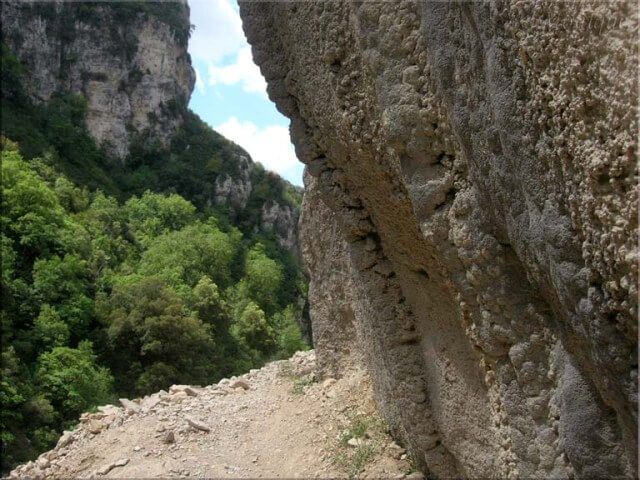
Download PDF for route description.
This hike is not recommended for people with fear of heights and is forbidden for children under the age of seven.
Take at least two liters of drinking water per person because in the canyon the heat can strike hard and there are no sources along the way.
Flashlight for the passage of the tunnels.
POI 1 - Martel Trail.
At the beginning of the 20th century, the well-known speleologist, Alfred-Edouard Martel, received an order from the Ministry of Agriculture to search for new water sources in the Provence. He forms a team with the local Isidore Blanc, a teacher from Rougon who is passionate about the flora and fauna of his region. In 1905, the expedition started to explore the unknown gorge of the Canyon du Verdon. The expedition leaves the Couloir Samson to arrive safely four days later in Galetas despite the destroyed boats and lost equipment. They are the first to have traveled throughout the whole canyon. In the 1930s, the French Touring Club opened a path from the Maline to the Couloir Samson. The main difficulty here is the descent of the Brèche Imbert. Ladders are placed to bridge the almost 100 meters of height difference. These ladders were replaced during the winters 2012 and 2013 by new metal ladders with a double handrail.
No additional information.
POI 2 - The tunnels.
In 1745 the States-General of Provence in Lambesc claim the help of Louis XV to make the Verdon navigable to the Durance for the purpose of facilitating the transportation of wood and food to Aix. In 1785, the project was put back on the agenda: ranchers who followed the course of the Verdon ensure its feasibility. Then suddenly comes a new era where the new energy becomes electricity and the project to make the river navigable is stopped. In 1870 it was decided to carry out a new project that provided for a derivation of the Verdon with a dam in Carajuan of 75m high to generate electricity. In 1885 a group of Swiss surveyors was appointed and the tunnel project starts in 1890. Everything is done manually without any assistance from machinery. From 1900 to 1910, eight tunnels were dug at both ends. There are as many teams as there are tunnels and each team consists of 20 men: miners, cleaners, finishers, mainly from Italy. The hydroelectric project is being discontinued due to the 1914-1918 war. The two tunnels you are going through are the remnants of this project. Some of the other tunnels are still left over but are too dangerous to enter.
No additional information.



